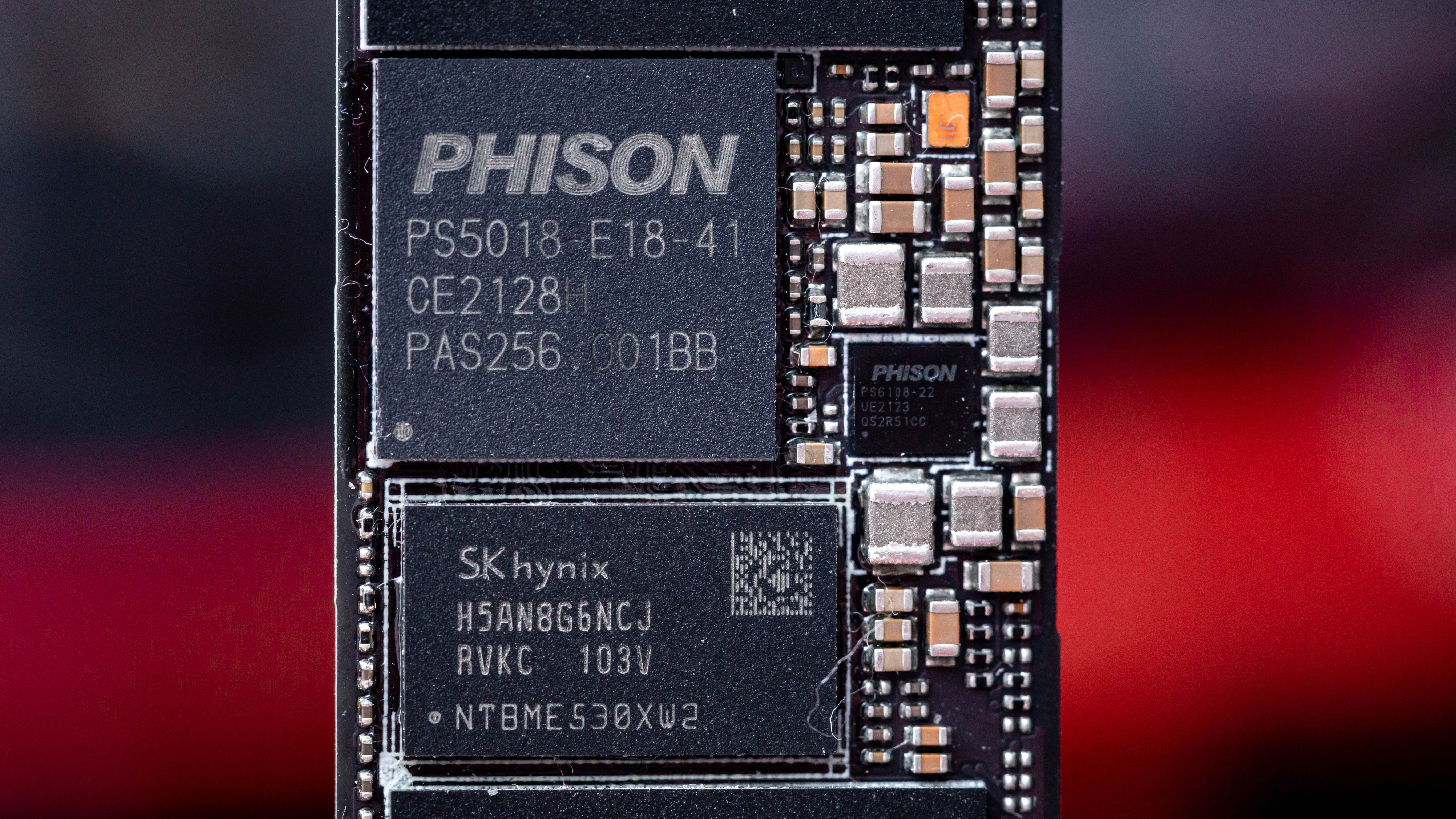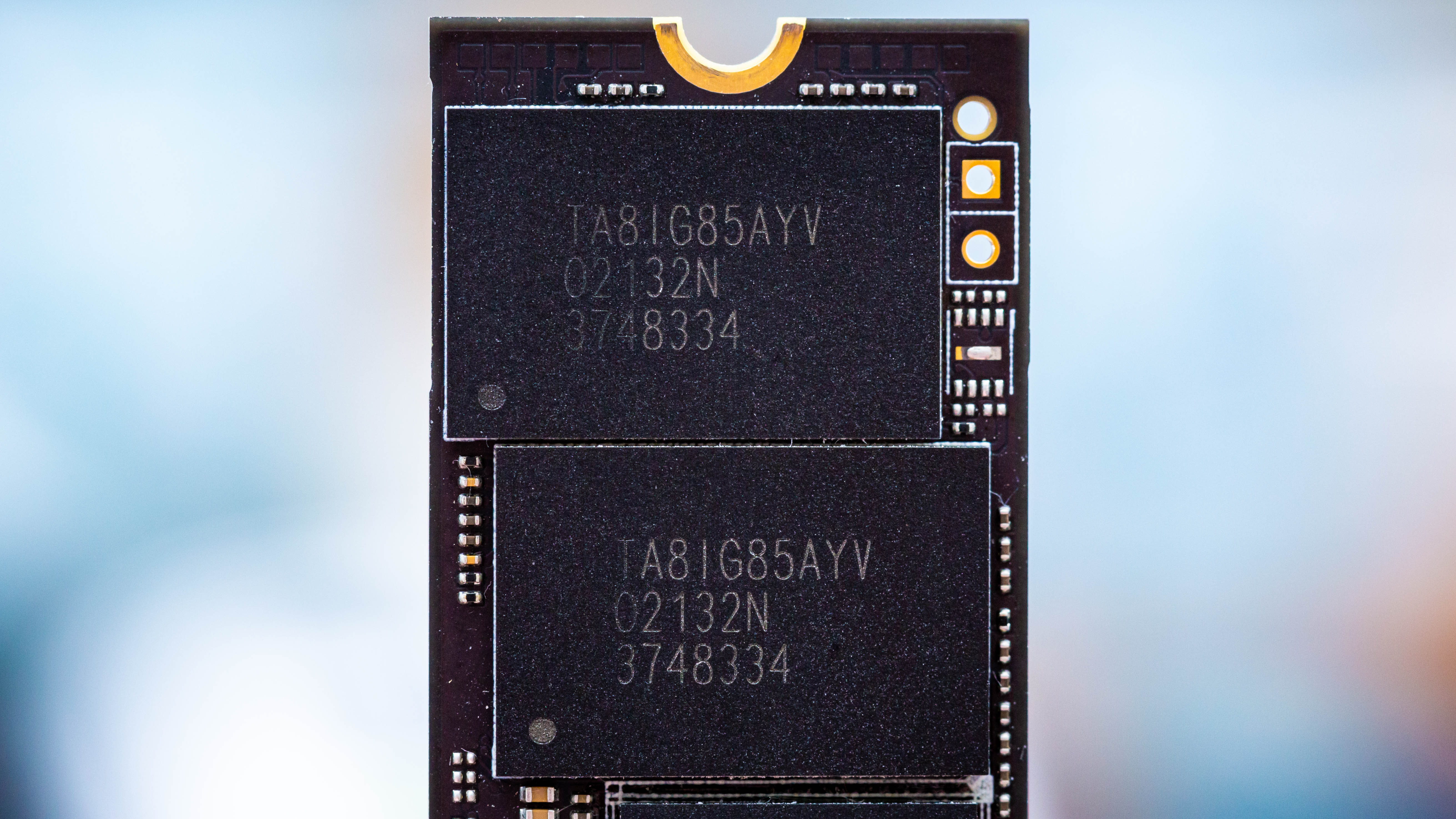Tom's Hardware Verdict
If you're seeking extreme PCIe 4.0 performance and high capacity, you now have a real option — if you can afford it. The Rocket 4 Plus at 8TB is envelope-pushing with TLC flash and, despite some performance hiccups, it's the fastest 8TB SSD we've tested.
Pros
- +
+ Very high capacity
- +
+ TLC flash, not QLC
- +
+ Performance in absolute terms
Cons
- -
High price
- -
Some performance pitfalls
Why you can trust Tom's Hardware
Sabrent's Rocket 4 Plus family has long been a favorite for performance seekers, but the new 8TB model ups the ante with extreme capacity courtesy of 112-layer BiCS5 flash, promising to take high-performance, high-capacity SSD storage to the next level as it vies for a spot on our list of Best SSDs.
Sabrent made a name for itself in the SSD market with the original Rocket, a ubiquitous SSD based on Phison’s competitive E12 SSD controller. The company has since enhanced its portfolio with an array of new drives, including the Rocket 4.0 and models with QLC flash, like the Rocket Q and the Rocket Q4.
But perhaps Sabrent is best known for its penchant for pushing the capacity limits with SSDs like the 4TB Rocket, the 8TB Rocket Q, and the 16TB Thunderbolt dock that includes two 8TB SSDs. The Rocket Q Battleship also hosts up to eight of those 8TB drives with a HighPoint RAID controller, providing a total of 64TB of flash storage.
However, plenty of demanding users want higher capacities with their consumer SSDs but don’t want to compromise with lower-endurance and lower-performance QLC flash. So if the drive can use TLC flash and still push the limits of PCIe 4.0 technology, all the better. Those users are in luck as Sabrent now offers this 8TB version of the high-performance Rocket 4 Plus, and it comes with 112-layer BiCS5 TLC flash that the company didn't use in the original SKUs.
Putting this much storage capacity, especially with TLC flash, on an M.2 drive has lots of challenges that require tough design decisions to ensure the drive is reliable and remains within spec. Nevertheless, it's nice to see a company willing to reach this high on the capacity front. Let's see if the extreme capacity comes with performance compromises.
Specifications
| Product | 8TB |
|---|---|
| Pricing | $1,999.99 |
| Capacity (User / Raw) | 8000GB/8192GB |
| Form Factor | M.2 2280 |
| Interface / Protocol | PCIe 4.0 / NVMe 1.4 |
| Controller | Phison PS5018-E18 |
| DRAM | DDR4 |
| Memory | Kioxia 112L BiCS5 |
| Sequential Read | 7,000 MBps |
| Sequential Write | 6,000 MBps |
| Random Read | Up to 700K IOPS |
| Random Write | Up to 1M IOPS |
| Security | N/A |
| Endurance (TBW/PBW) | 6PBW |
| Part Number | SB-RKT4P-8TB |
| Warranty | 5-Year |
The 8TB Sabrent Rocket 4 Plus is a standard M.2 2280, PCIe 4.0/NVMe 1.4 drive. It’s rated for up to 7/6 GBps of sequential read/write throughput, which is a comparatively slight 100/600 MBps slower than the 4TB model. The SDD is rated for 700,000 random read IOPS and a peak of 1,000,000 IOPS for random writes.
This drive has a nominal one-year warranty that you can extend to five years with registration. Endurance matches expectations at 6PBW (petabytes written), meaning it can absorb 6 petabytes of write data. Even with 8TB of flash, that's more than enough for the vast majority of users.
We see a surprise with pricing at an MSRP of $1,999.99, or about $0.25 a gigabyte. This premium stems from the challenges of cramming 8TB of TLC onto an M.2 stick. Additionally, if you absolutely need this level of performance and capacity, there is simply no competition at the moment.
Software and Accessories
One of the things we like about Sabrent is that their drives come with software. This includes three items: Acronis True Image, the Rocket Control Panel, and the Rocket Sector Size Converter. The OEM copy of Acronis allows users to clone their drive, which is useful when upgrading to a new drive. The Rocket Control Panel is similar to SSD toolboxes from other manufacturers, offering monitoring information and firmware updates. Finally, the Sector Size Converter allows you to format the drive in either 512e or 4Kn.
The original Sabrent Rocket came formatted as 4Kn with 4kB logical and physical sector sizes, which caused some issues for users trying to clone from 512e drives with a 512B logical sector size. Later drives came as 512e from the factory, but Sabrent also began offering a tool to allow users to format as they please. The 4Kn advanced format is more efficient with space usage and can improve performance for an SSD, although it’s more typically utilized in the enterprise space.
Get Tom's Hardware's best news and in-depth reviews, straight to your inbox.
A Closer Look
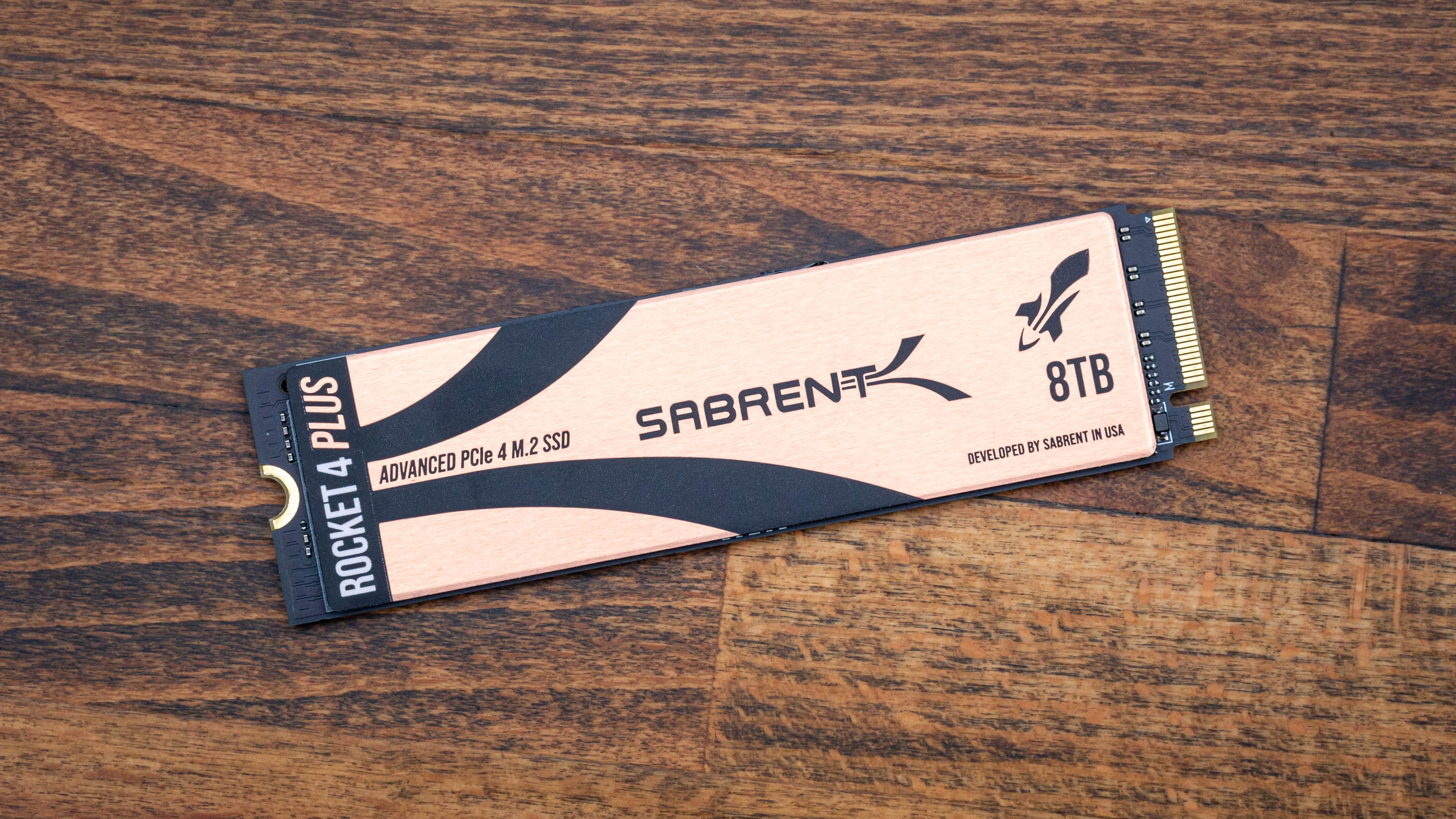
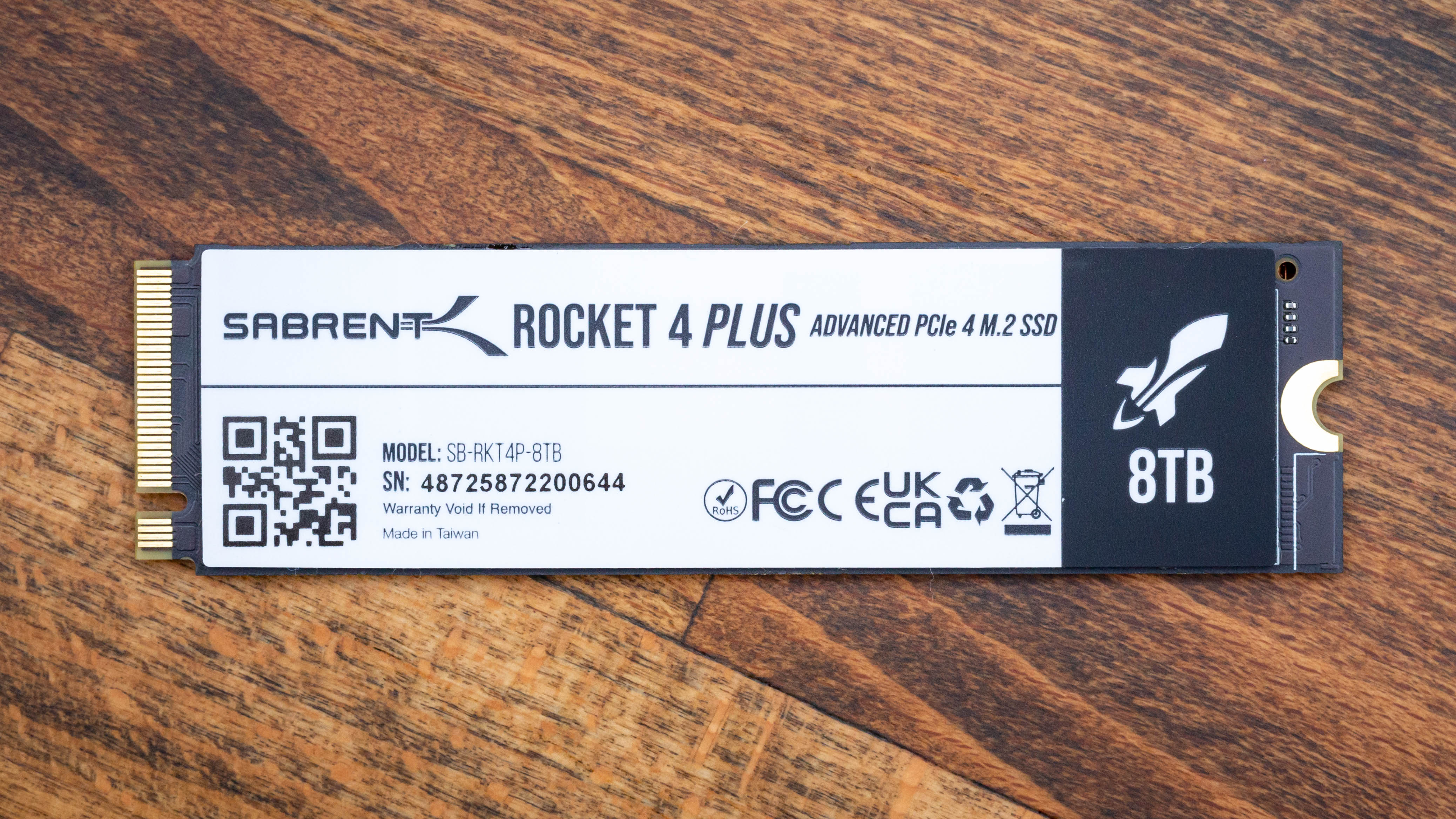
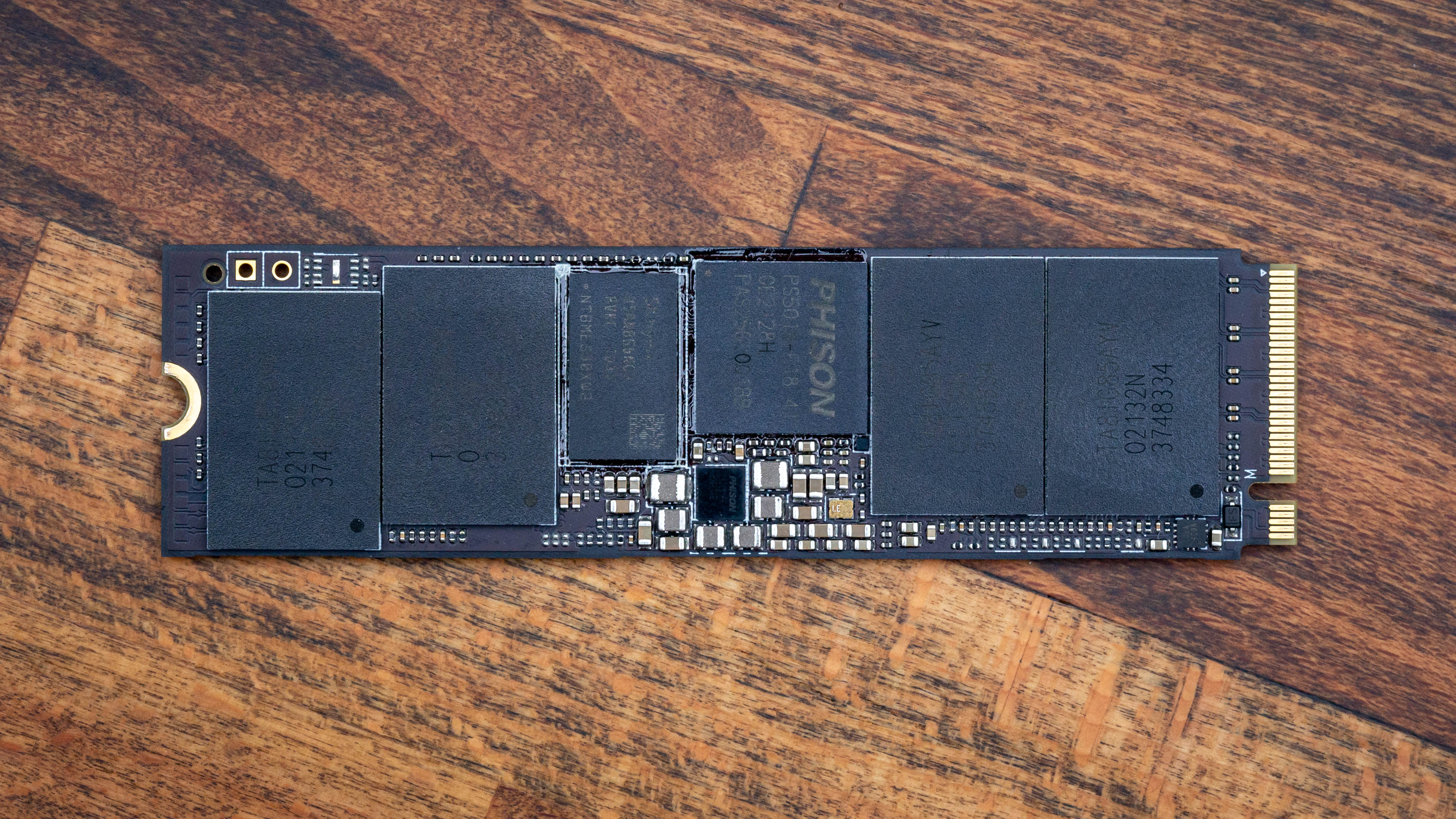

The Rocket 4 Plus’s familiar copper sheen, as presented by its heatspreader, hides the anticipated Phison E18 controller. The back label offers basic details such as the model, serial numbers, and capacity. With both removed, eight NAND and two DRAM packages are visible, half of each on either side of the double-sided PCB. The PCB itself is black, and we can also spot the PMIC near the controller as it happens to stand out against that backdrop.
The Phison E18 SSD controller has proven to be quite the contender even when burdened by 64 dies. This one seems to have been manufactured during the 28th week of 2021. It’s likely the firmware has been optimized for this NAND as well as for managing that many dies.
The DRAM is labeled H5AN8G6NCJ by SK hynix - the “8G” lets us identify it as an 8Gbit or 1GB package while the “6” implies a 16-bit configuration, therefore 512M x 16b. As the other side of the PCB has another one of these packages, the total DRAM cache amount is 2GB. This should be more than sufficient for consumer use even with 8TB of storage. Looking up the designation, we discover this is DDR4, which can offer some power savings over DDR3.
The flash is labeled TA8IG85AYV with 8Tb or 1TB NAND packages. This should be in an 8DP configuration (eight dies per package). This means we have a total of 64 dies, and each die is 1Tb (128GB). This is quite dense for TLC but has been seen before and will be again; flash is only getting denser as the layer count increases. The rest of the designation tells us this is 112-layer BiCS5 from Kioxia.
This flash is more or less equivalent to 128-layer TLC from other manufacturers, such as that found on the 980 Pro by Samsung or on the Gold P31 by SK hynix. BiCS5 should come with a bit lower latency than the old 96-layer BiCS4 flash that’s been used in many products and often as an alternative to Micron’s 96-layer B27B TLC. We’ve seen good results from it on the SN570 and, especially, the SN770.
Kioxia originally demonstrated the technical specifications for BiCS5 at ISSCC 2019. The original design was a 128-layer quad-plane design with a CMOS-under-Array (CuA) configuration. However, the BiCS we tested here is a 112-layer dual-plane design without CuA. These compromises suggest a bigger focus on production efficiency (density and yield), which explains the 1Tb dies used here. These characteristics have potentially impacted other drives by WD that have had their flash upgraded or replaced.
The changes to BiCS5 are an important consideration when comparing this particular SKU to the older Rocket 4 Plus SKUs that were upgraded to 176-layer B47R TLC from Micron. This is, in fact, also a crucial bit of information when comparing to QLC of the same density that will have twice the planes and CuA in place.
MORE: Best SSDs
MORE: How We Test HDDs And SSDs
MORE: All SSD Content

Shane Downing is a Freelance Reviewer for Tom’s Hardware US, covering consumer storage hardware.
-
kristoffe $1999+tax to game... more on tlc which is going to crap out quickly... and has performance caching issues. Was this ad, sorry article, paid for by sabrent?Reply -
Aaron44126 MSRP was $1499 when this thing launched (about a month ago — I know because I purchased some). They bumped it up to $1999 more recently. Seems to be all out of stock, too.Reply -
WrongRookie ReplyAaron44126 said:MSRP was $1499 when this thing launched (about a month ago — I know because I purchased some). They bumped it up to $1999 more recently. Seems to be all out of stock, too.
How is that even possible? Wouldn't that then imply that it sold well?
Anyways...having only one capacity option is what stops it from being a tempting buy. Half of the market isn't even focused on having 4TB nvme...even Samsung hasn't bothered with it. -
seanwebster Reply
Are you sure you’re not confusing QLC and TLC? All modern consumer SSDs use a form of dynamic pSLC caching. MLC isn’t in production and SLC is either very expensive or QLC in full SLC mode.kristoffe said:$1999+tax to game... more on tlc which is going to crap out quickly... and has performance caching issues. Was this ad, sorry article, paid for by sabrent?
They have had Rocket 4 Plus capacities ranging from 500GB-4TB since before the release of this 8TB model. They use 176L flash now, an update from the original 96L, while the 8TB uses BiCS5. The 4TB model with 176L TLC is in the comparison charts for your reference.WrongRookie said:Anyways...having only one capacity option is what stops it from being a tempting buy. Half of the market isn't even focused on having 4TB nvme...even Samsung hasn't bothered with it. -
WrongRookie Replyseanwebster said:They have had Rocket 4 Plus capacities ranging from 500GB-4TB since before the release of this 8TB model. They use 176L flash now, an update from the original 96L, while the 8TB uses BiCS5. The 4TB model with 176L TLC is in the comparison charts for your reference
Oh I'm sorry my bad on that part. Still the general consumer hasn't even adapted to the 4tb NVMe capacity yet so having 8tb at this point seems pointless and expensive... -
seanwebster Reply
Yes, I agree that this drive is not for the average consumer, and this is the mindset of the big manufacturer such as Samsung, WD and Crucial. However, it’s a very hot item for prosumers and content creators. Demand is there and Sabrent seems to be the only one answering it. I’d love an 8TB 980 Pro or WD Black SN850/X, but their seemingly archaic mindset prohibit them from creating and selling them even though they should be fully capable of such.WrongRookie said:Oh I'm sorry my bad on that part. Still the general consumer hasn't even adapted to the 4tb NVMe capacity yet so having 8tb at this point seems pointless and expensive... -
Eximo Just waiting for a 4TB drive under $300 or so, then I will retire my spinning drive to backup duty only.Reply -
Co BIY The way they want to sell them at a higher per TB cost than low TB drives runs against consumer's understanding of the world.Reply
This is the problem.
No one upsells at a higher per unit price.
I do see a huge advantage to having a single drive in a system that needs High capacity.
Why no 3TB drives ? I think this could be a sweet spot in the Market. -
Alvar "Miles" Udell The problem is prices of ultra high capacity SSDs have not really come down with time, and have actually increased in most cases from the under $100/TB to double digit percentages higher, with gold standard 2TB drives like the WD SN850 and Samsung 980 Pro sitting at $120/TB. 4TB and higher SSDs haven't seen the same kind of drop towards affordability.Reply
Yes the need for higher than 2TB SSDs in the consumer space is rather limited given how easy it is to offload games and such to hard drives, as well as using 2-2TB NVMe drives in spanning RAID, but still by 2022 you would think 4TB and higher NVMe SSDs would be far more affordable than they are. -
LastStanding ReplyWrongRookie said:How is that even possible? Wouldn't that then imply that it sold well?
Anyways...having only one capacity option is what stops it from being a tempting buy. Half of the market isn't even focused on having 4TB name...even Samsung hasn't bothered with it.
That's the thing, "sold out" doesn't always mean that the product is selling well. For example, when you have 70K orders but that vender has only managed to yield 12K.
I am not so credulous to think that an absurd overpriced 2K drive (and Sabrent's drives are not known for their impeccable endurance, etc.) is selling out faster than the PS5 without having some major supply issues (or Sabrent is doing an NVIDIA here), especially now with inflation and interests rates hikes.
